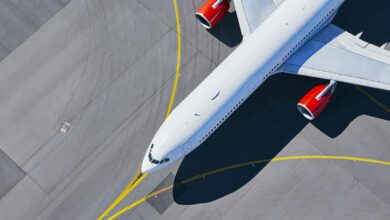New tool reveals the real environmental impact of aviation

A team from the University of Surrey have developed a new tool that could revolutionise how we measure the environmental impact of air travel.
The Air Travel Passenger Dynamic Emissions Calculator, known as ATP-DEC, represents a significant leap forward from existing carbon calculators that have, according this research, long underestimated the true climate cost of flying.
Unlike most current calculators, which focus narrowly on CO2, the ATP-DEC incorporates what researchers call ‘non-Kyoto impacts.’ These include nitrogen oxide, water vapor and aircraft contrails, the effect of which can be substantially greater than the CO2 emissions themselves, meaning that existing calculators have been severely underestimating aviation’s climate impact by leaving them out.
The calculator also takes a cradle-to-grave perspective that tracks emissions throughout the entire life cycle of a flight. This means accounting not just for fuel burned in the air, but also for fuel production and transportation, emissions during takeoff and landing, in-flight services and even the environmental costs of airports and aircraft themselves. Most existing tools capture only a fraction of these emission sources.
But what really sets ATP-DEC apart is that it calculates emissions specifically for each individual flight, taking into account the unique details that make one journey different from another. In contrast, many current calculators use rough estimates and general categories that treat all flights similarly. These one-size-fits-all approaches can’t capture the real environmental impact and may give passengers a false sense of how much damage their specific flight is actually causing to the climate.
Testing on over 30,000 flights demonstrates that ATP-DEC’s estimates align closely with actual flight data, while leading calculators significantly underreport emissions. The tool captures real-world operational changes, such as longer flight paths due to Russian airspace closures, which existing calculators miss, resulting in underestimating emissions by tens of thousands of tonnes per passenger on some long-haul routes each year.
Xavier Font, co-author of the study and Professor of Sustainability Marketing at the University of Surrey, said: ‘The aviation sector has a responsibility to be honest about the environmental cost of flying. Without accurate data, we cannot design effective taxes, offsets or behaviour changes. Our tool puts robust, transparent science into the hands of those who can drive real change.
‘Airlines, booking platforms and policymakers could integrate ATP-DEC into their systems immediately. Its modular design means it can evolve with new aircraft types, sustainable fuels and more advanced climate models. It also links directly to blockchain-verified carbon offsetting projects, making it easier to take credible action.
‘Industry-wide, this model could set a new benchmark for climate transparency, replacing outdated tools that mislead the public and delay action on aviation’s environmental impact.’




